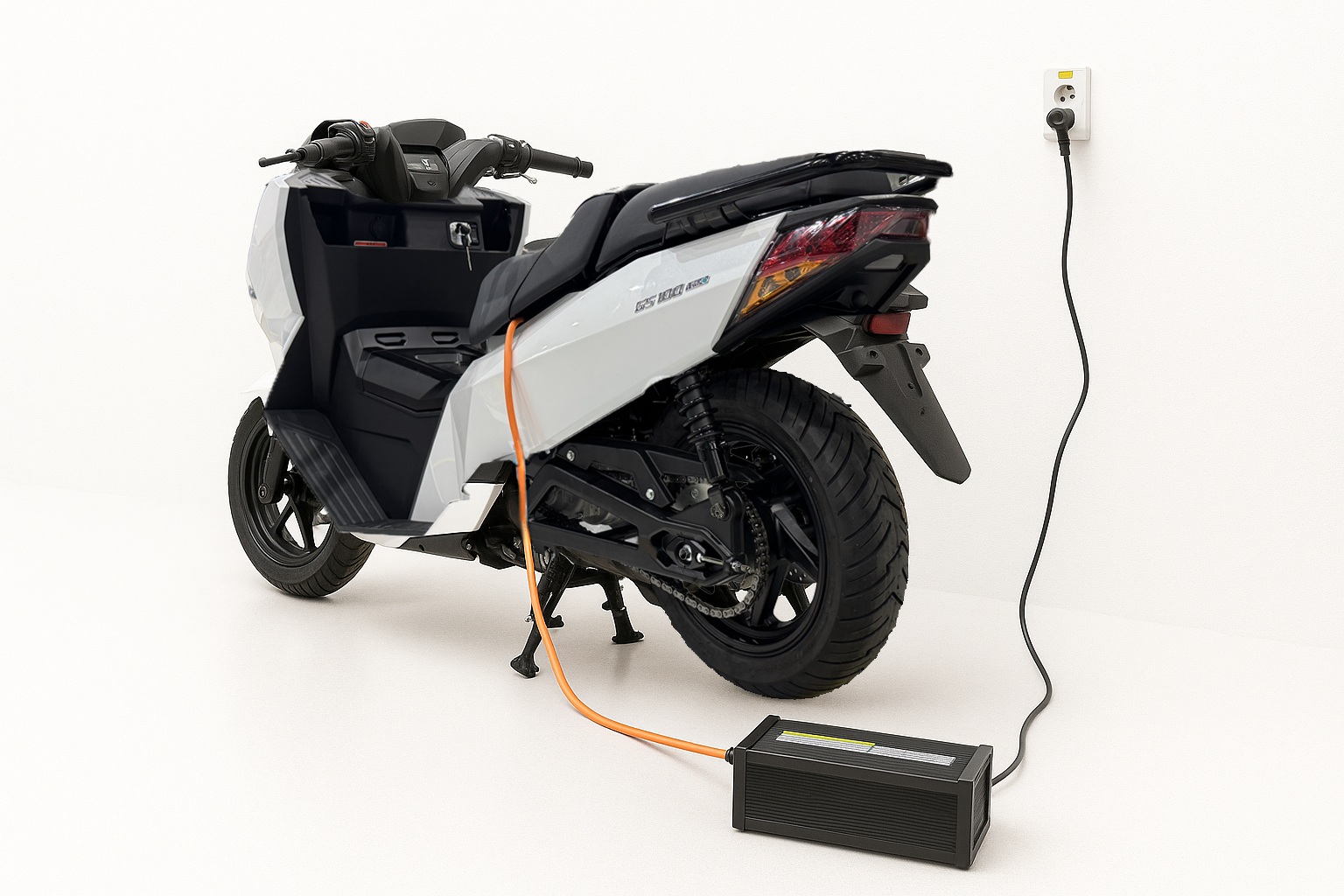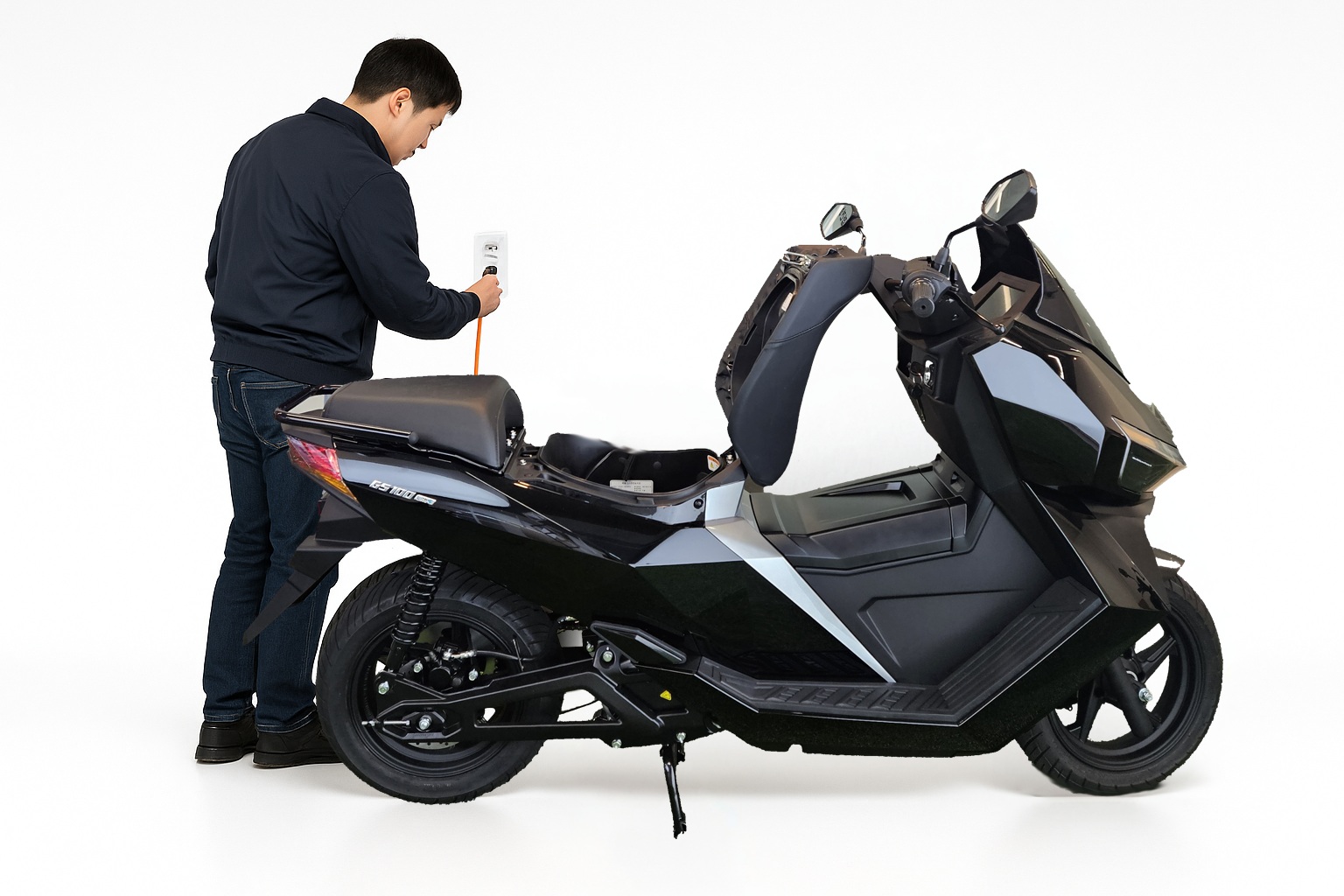Daedong Mobility Launches "GS100 Lite" Plug-in Model for At-Home Charging
"Expanding into the Plug-in E-Scooter Market to Secure the No.1 Position"
Daedong Mobility Launches "GS100 Lite" Plug-in Model for At-Home Charging
- Designed for convenient charging anywhere with access to a 220V outlet and charging cable... no BSS (Battery Swapping Station) required.
- Fully charges in under 4 hours, offering a maximum driving range of 60.6 km... Ideal for office workers and self-employed users with shorter daily travel needs.
- Compared with gas-powered scooters, the new model can save up to KRW 1.5 million annually in fuel costs, based on 50,000 km of driving per year.
Daedong Mobility, the AI robotics and mobility subsidiary of Daedong Group (CEO Won Yu-hyun), announced on June 5 the launch of the "GS100 Lite Plug-in," an electric scooter designed to be charged anywhere using standard 220V power with simple accessories such as a charging jack and cradle.
In Korea’s electric scooter market, charging methods fall into two major categories: a Battery Swap System (BSS), where riders pay a set fee to exchange depleted batteries for fully charged ones at swap stations; and a plug-in type, which allows users to charge directly from a household 220V outlet with charging accessories. Since 2022, Daedong Mobility has primarily focused on BSS-based models, targeting delivery riders who require frequent battery exchanges. As of 2024, there are around 1,900 Battery Swap System (BSS) units in Korea, with nearly 60% concentrated in the Seoul and Gyeonggi regions, according to the Ministry of Environment. To expand into non-metropolitan areas, and to meet the needs of office workers and self-employed users who don’t rely on swap stations, Daedong Mobility has introduced its new plug-in model.

The GS100 Lite Plug-in can be recharged in two ways: by connecting the scooter’s built-in battery directly to a household 220V outlet with a portable charging cable, or by removing the battery and placing it in a dedicated charging cradle (sold separately, compatible with up to two units). A full charge takes less than four hours and delivers a maximum range of 60.6 km. Since the model can be charged using standard household electricity, it also offers significant cost savings. Based on an annual driving distance of 50,000 km, the GS100 Lite Plug-in can reduce fuel expenses by up to KRW 1.5 million per year, which could be up to 74.2% less compared with a conventional gasoline scooter. The new model stands out for its quality, incorporating domestically produced components for key parts such as the electric motor, tires, suspension, and braking system. With a localization rate of 92%, it differentiates itself from Chinese-made electric scooters by offering superior reliability.
Daedong Mobility has also introduced a Special Edition (SE) line for both the GS100 (standard and shared-use versions[1]) and the GS100 Lite. The SE models reflect customer demand for greater convenience and more distinctive design features. Each SE unit is equipped with a long windscreen, decorative decals, and new color options, including Serena Blue for the body and Metal Chrome for the wheels. The windscreen measures 87 centimeters, which is 23 centimeters taller than that of the GS100 and 47 centimeters taller than that of the GS100 Lite. This addition helps shield riders from wind, dust, and rain, while also easing fatigue during long-distance rides.

________________________________________
[1] The difference between the GS100 standard model and the sharing model lies in whether they are compatible with Battery Swap Stations (BSS) for battery replacement and charging. The standard version of the GS100 is not compatible with BSS batteries and can only be charged using a dedicated charging cradle.
